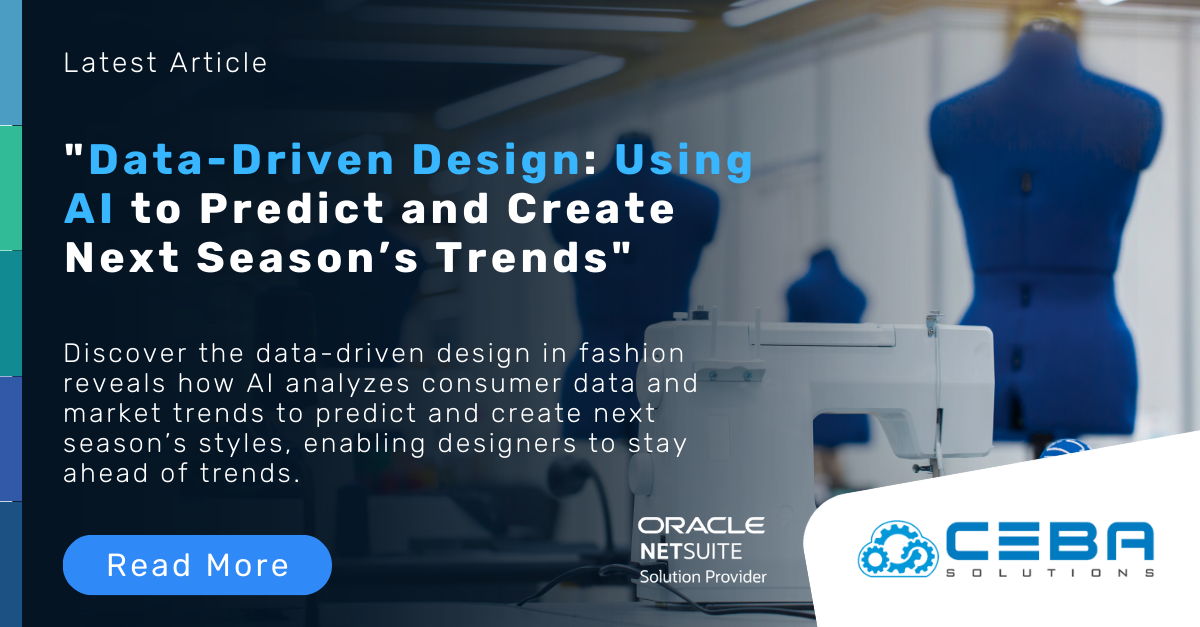
AI-Powered Fashion: How Artificial Intelligence is Redefining Design and Production
AI-Powered Fashion: How Artificial Intelligence is Redefining Design and Production
Artificial Intelligence (AI) is carving out a significant niche in the fashion industry, redefining traditional design and production processes. From automating design elements to streamlining production and predicting trends, AI is enhancing creativity and efficiency in the fashion world. This article explores the transformative role of AI in fashion, highlighting how it's being used to drive innovation and reshape the industry.
1. Automated Design Processes
AI is being employed to automate various aspects of the design process, such as pattern making and textile printing. By using AI algorithms, designers can quickly generate pattern designs or textile prints based on specific inputs and trends, significantly speeding up the design phase and allowing more time for refinement.
Benefits:
- Enhanced Creativity: AI tools provide designers with new possibilities and variations, pushing creative boundaries. These tools can suggest unique patterns and color combinations that may not have been considered otherwise, sparking new ideas.
- Efficiency Gains: Automates repetitive tasks, allowing designers to focus on more complex and creative aspects of fashion design. This shift enables quicker turnaround times and more room for experimentation and innovation.
Real-World Application:
Designers at brands like Nike and Adidas use AI-driven design tools to create innovative patterns and prints. These tools help them explore a wide range of design possibilities efficiently, ensuring that their collections are fresh and trend-setting.
2. Trend Prediction and Analysis
AI excels in analyzing vast amounts of data from current fashion trends, social media inputs, and previous sales data to predict future trends. These insights help brands to stay ahead of the curve by developing products that align with anticipated market demands.
Benefits:
- Market Responsiveness: Enables brands to quickly adapt to changing trends and consumer preferences. This agility is crucial in the fast-paced fashion industry where trends can change rapidly.
- Inventory Optimization: Reduces overproduction and underproduction by aligning product offerings with forecasted demand. Accurate trend predictions help in planning production schedules and inventory levels, minimizing waste and maximizing sales.
Real-World Application:
Retailers like H&M and Zara use AI to analyze social media trends and customer feedback. This real-time analysis helps them to quickly adjust their collections to meet current market demands, ensuring that they remain relevant and competitive.
3. Customized and Personalized Fashion
AI technologies are making it easier for brands to offer personalized and customized fashion at scale. By analyzing consumer data, AI can suggest tailored designs, sizes, and styles that meet the unique preferences and needs of individual customers.
Benefits:
- Increased Customer Satisfaction: Personalized products resonate better with customers, enhancing satisfaction and loyalty. Consumers appreciate products that feel unique and tailored to their tastes.
- Unique Product Offerings: Differentiates brands in a competitive market by offering unique, customized products. This personalization can create a strong competitive advantage and drive brand loyalty.
Real-World Application:
Companies like Levi's and Nike offer customization options through their online platforms. AI helps them analyze customer data to suggest personalized products, creating a unique shopping experience that boosts customer engagement and satisfaction.
4. Supply Chain Optimization
AI optimizes fashion supply chains by predicting the best times to manufacture and distribute products, analyzing logistics data to improve delivery times, and managing inventory more efficiently.
Benefits:
- Reduced Costs: Optimizes production schedules and inventory levels, reducing waste and associated costs. Efficient supply chain management can lead to significant cost savings.
- Faster Time to Market: Ensures that products are produced and delivered more efficiently, keeping pace with fast-moving fashion cycles. This responsiveness is essential for maintaining relevance in the fashion industry.
Real-World Application:
Brands like Patagonia and Uniqlo use AI to streamline their supply chain operations. AI-driven insights help them optimize production schedules, manage inventory levels, and ensure timely delivery of products, enhancing overall operational efficiency.
5. Sustainable Fashion Practices
AI is instrumental in promoting sustainability in fashion by predicting which designs will be most popular, thus preventing overproduction. Additionally, AI can optimize fabric cutting processes to minimize waste and identify the most sustainable materials and suppliers.
Benefits:
- Reduced Waste: Minimizes fabric waste during production and decreases unsold inventory. By aligning production closely with demand, AI helps reduce the environmental impact of overproduction.
- Eco-friendly Brand Image: Enhances brand image by adopting more sustainable practices, appealing to environmentally conscious consumers. Sustainability is becoming increasingly important to consumers, and brands that prioritize it can strengthen their market position.
Real-World Application:
Eco-conscious brands like Stella McCartney and Reformation use AI to support their sustainability goals. AI helps them optimize material use and production processes, ensuring that their practices are as eco-friendly as possible.
Conclusion
AI is making a profound impact on the fashion industry, transforming everything from design to supply chain management. As AI technology continues to evolve, its integration into fashion processes will deepen, further revolutionizing the industry. This shift not only promises increased efficiency and creativity but also a move towards more personalized and sustainable fashion practices.
The future of fashion lies in the innovative application of AI, where creativity meets technology to create smarter, more efficient, and environmentally friendly practices. Brands that embrace these advancements will be well-positioned to lead the industry, offering products that meet the evolving demands of modern consumers while setting new standards for sustainability and innovation.






